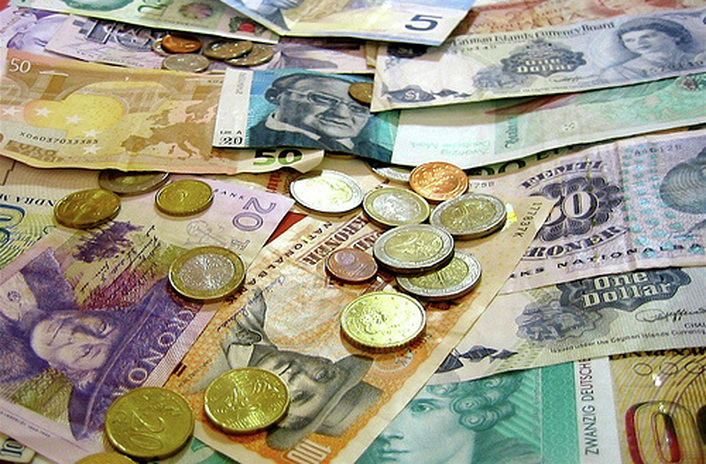Introduction and History Of Money
Money is anything that is generally accepted as payment for goods and services and repayment of debts.The main functions of money are distinguished as: a medium of exchange, a unit of account, a store of value, and occasionally, a standard of deferred payment.
Money originated as commodity money, but nearly all contemporary money systems are based on fiat money.Fiat money is without value as a physical commodity, and derives its value by being declared by a government to be legal tender; that is, it must be accepted as a form of payment within the boundaries of the country, for "all debts, public and private".
The money supply of a country consists of currency (banknotes and coins) and demand deposits or 'bank money' (the balance held in checking accounts and savings accounts). These demand deposits usually account for a much larger part of the money supply than currency.Bank money is intangible and exists only in the form of various bank records. Despite being intangible, bank money still performs the basic functions of money, being generally accepted as a form of payment.
The word "money" is believed to originate from a temple of Hera, located on Capitoline, one of Rome's seven hills. In the ancient world Hera was often associated with money. The temple of Juno Moneta at Rome was the place where the mint of Ancient Rome was located.The name "Juno" may derive from the Etruscan goddess Uni (which means "the one", "unique", "unit", "union", "united") and "Moneta" either from the Latin word "monere" (remind, warn, or instruct) or the Greek word "moneres" (alone, unique).
In the Western world, a prevalent term for coin-money has been specie, stemming from Latin in specie, meaning 'in kind'.
Money originated as commodity money, but nearly all contemporary money systems are based on fiat money.Fiat money is without value as a physical commodity, and derives its value by being declared by a government to be legal tender; that is, it must be accepted as a form of payment within the boundaries of the country, for "all debts, public and private".
The money supply of a country consists of currency (banknotes and coins) and demand deposits or 'bank money' (the balance held in checking accounts and savings accounts). These demand deposits usually account for a much larger part of the money supply than currency.Bank money is intangible and exists only in the form of various bank records. Despite being intangible, bank money still performs the basic functions of money, being generally accepted as a form of payment.
The word "money" is believed to originate from a temple of Hera, located on Capitoline, one of Rome's seven hills. In the ancient world Hera was often associated with money. The temple of Juno Moneta at Rome was the place where the mint of Ancient Rome was located.The name "Juno" may derive from the Etruscan goddess Uni (which means "the one", "unique", "unit", "union", "united") and "Moneta" either from the Latin word "monere" (remind, warn, or instruct) or the Greek word "moneres" (alone, unique).
In the Western world, a prevalent term for coin-money has been specie, stemming from Latin in specie, meaning 'in kind'.
History of Money
1.Barter
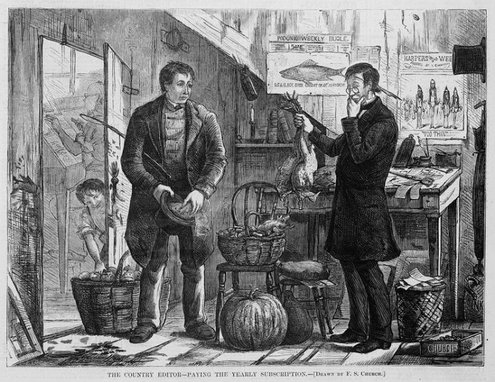
showing a man engaging in barter: offering chickens in exchange for his yearly newspaper subscription.
The first people didn't buy goods from other people with money. They used barter. Barter is the exchange of personal possessions of value for other goods that you want. This kind of exchange started at the beginning of humankind and is still used today. From 9,000-6,000 B.C., livestock was often used as a unit of exchange. Later, as agriculture developed, people used crops for barter. For example, I could ask another farmer to trade a pound of apples for a pound of bananas.
2.Shells
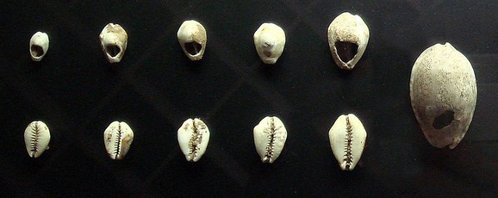
Chinese shell money
At about 1200 B.C. in China, cowry shells became the first medium of exchange, or money. The cowry has served as money throughout history even to the middle of this century.
3.First Metal Money
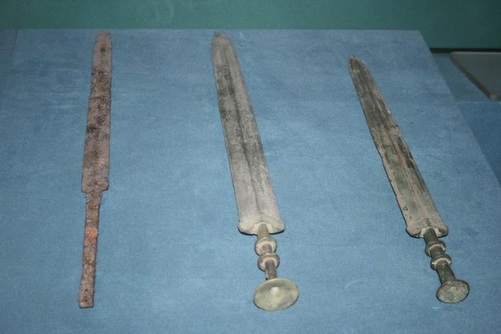
Weapon use as money in china in 1000 B.C
China, in 1,000 B.C., produced mock cowry shells at the end of the Stone Age. They can be thought of as the original development of metal currency. In addition, tools made of metal, like knives and spades, were also used in China as money. From these models, we developed today's round coins that we use daily. The Chinese coins were usually made out of base metals which had holes in them so that you could put the coins together to make a chain.
4.Coins
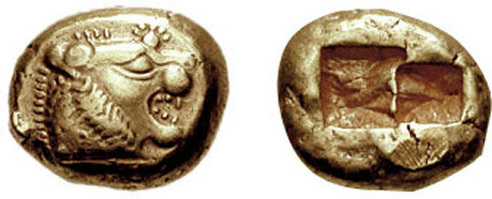
Lydian electrum coin (or badge) (one-third stater denomination) minted ca. 600 BC
At about 600-650 B.C., pieces of silver were the earliest coins. Eventually in time they took the appearance of today and were imprinted with numerous gods and emperors to mark their value. These coins were first shown in Lydia, or Turkey, during this time, but the methods were used over and over again, and further improved upon by the Greek, Persian, Macedonian, and Roman empires. Not like Chinese coins, which relied on base metals, these new coins were composed from scarce metals such as bronze, gold, and silver, which had a lot of intrinsic value.
5.Leather Currency
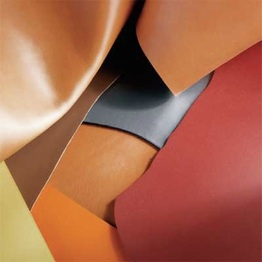
In 118 B.C., banknotes in the form of leather money were used in China. One-foot square pieces of white deerskin edged in vivid colors were exchanged for goods. This is believed to be the beginning of a kind of paper money.
6.Noses

People Of Ireland used nose as money
During the ninth century A.D., the Danes in Ireland had an expression "To pay through the nose." It comes from the practice of cutting the noses of those who were careless in paying the Danish poll tax.
7.Paper Currency
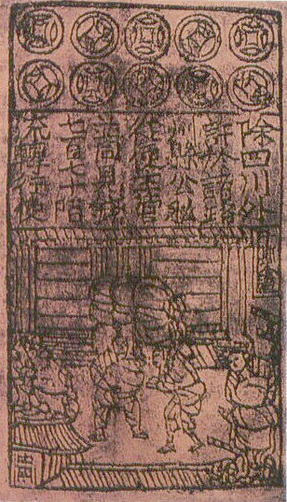
Song Dynasty Jiaozi, the world's earliest paper money
From the seventh century to the fifteenth century A.D., in China, the first actual paper currency was used as money. Through this period the amount of currency skyrocketed causing severe inflation. Unfortunately, in 1455 the use of the currency vanished from China. European civilization still would not have paper currency for many years.
8.Potlach
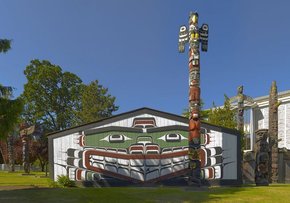
North American Indians engaged in potlach
In 1500, North American Indians engaged in potlach, a term that describes the exchange of gifts at banquets, dances, and various rituals. Since the trading of gifts was so important in figuring the leaders’ community status, potlach went out of control as the gifts became more extravagant in an effort to surpass others' gifts.
9.Wampum
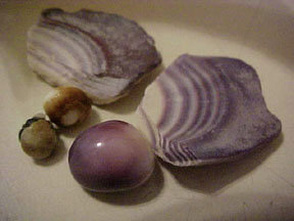
Wampum are used by North American Indians as money
In 1535, though likely well before this earliest recorded date, strings of beads made from clam shells, called wampum, are used by North American Indians as money. Wampum means white, the color of the clam shells and the beads.
10.Gold Standard
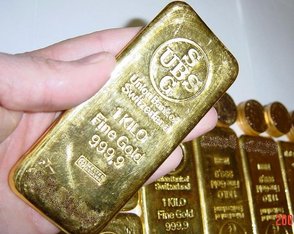
1 kg gold bar
In 1816, England made gold a benchmark of value. This meant that the value of currency was pegged to a certain number of ounces of gold. This would help to prevent inflation of currency. The U.S. went on the gold standard in 1900.
11.Depression

Because of the depression of the 1930's, the U.S. began a world wide movement to end tying currency to gold. Today, few nations tie the value of their currency to the price of gold. Other government and financial institutions now try to control inflation.
12.Today
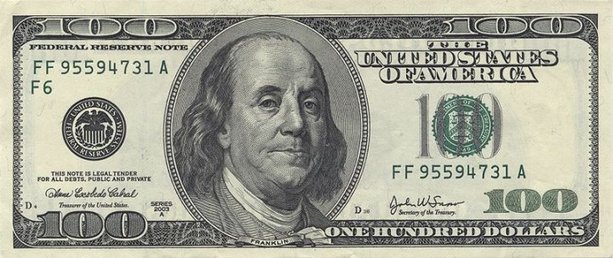
Obverse of the Series 2003A $100 bill
At present, nations continue to change their currencies. For example, the U.S. has already changed its $100 and $20 banknotes. More changes are in the works.
13.Tomorrow
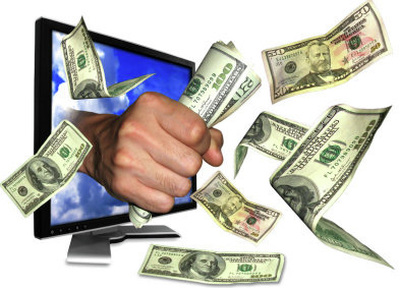
Online Banking
Tomorrow is already here. Electronic money (or digital cash) is already being exchanged over the Internet.
Summary
The use of barter-like methods may date back to at least 100,000 years ago, though there is no evidence of a society or economy that relied primarily on barter.Instead, non-monetary societies operated largely along the principles of gift economics. When barter did occur, it was usually between either complete strangers or potential enemies.
Many cultures around the world eventually developed the use of commodity money. The shekel was originally both a unit of currency and a unit of weight.The first usage of the term came from Mesopotamia circa 3000 BC. Societies in the Americas, Asia, Africa and Australia used shell money – usually, the shell of the money cowry (Cypraea moneta) were used. According to Herodotus, and most modern scholars, the Lydians were the first people to introduce the use of gold and silver coin.It is thought that these first stamped coins were minted around 650–600 BC.
The system of commodity money eventually evolved into a system of representative money.This occurred because gold and silver merchants or banks would issue receipts to their depositors – redeemable for the commodity money deposited. Eventually, these receipts became generally accepted as a means of payment and were used as money. Paper money or banknotes were first used in China during the Song Dynasty. These banknotes, known as "jiaozi" evolved from promissory notes that had been used since the 7th century. However, they did not displace commodity money, and were used alongside coins. Banknotes were first issued in Europe by Stockholms Banco in 1661, and were again also used alongside coins. The gold standard, a monetary system where the medium of exchange are paper notes that are convertible into pre-set, fixed quantities of gold, replaced the use of gold coins as currency in the 17th-19th centuries in Europe. These gold standard notes were made legal tender, and redemption into gold coins was discouraged. By the beginning of the 20th century almost all countries had adopted the gold standard, backing their legal tender notes with fixed amounts of gold.
After World War II, at the Bretton Woods Conference, most countries adopted fiat currencies that were fixed to the US dollar. The US dollar was in turn fixed to gold. In 1971 the US government suspended the convertibility of the US dollar to gold. After this many countries de-pegged their currencies from the US dollar, and most of the world's currencies became unbacked by anything except the governments' fiat of legal tender.
Many cultures around the world eventually developed the use of commodity money. The shekel was originally both a unit of currency and a unit of weight.The first usage of the term came from Mesopotamia circa 3000 BC. Societies in the Americas, Asia, Africa and Australia used shell money – usually, the shell of the money cowry (Cypraea moneta) were used. According to Herodotus, and most modern scholars, the Lydians were the first people to introduce the use of gold and silver coin.It is thought that these first stamped coins were minted around 650–600 BC.
The system of commodity money eventually evolved into a system of representative money.This occurred because gold and silver merchants or banks would issue receipts to their depositors – redeemable for the commodity money deposited. Eventually, these receipts became generally accepted as a means of payment and were used as money. Paper money or banknotes were first used in China during the Song Dynasty. These banknotes, known as "jiaozi" evolved from promissory notes that had been used since the 7th century. However, they did not displace commodity money, and were used alongside coins. Banknotes were first issued in Europe by Stockholms Banco in 1661, and were again also used alongside coins. The gold standard, a monetary system where the medium of exchange are paper notes that are convertible into pre-set, fixed quantities of gold, replaced the use of gold coins as currency in the 17th-19th centuries in Europe. These gold standard notes were made legal tender, and redemption into gold coins was discouraged. By the beginning of the 20th century almost all countries had adopted the gold standard, backing their legal tender notes with fixed amounts of gold.
After World War II, at the Bretton Woods Conference, most countries adopted fiat currencies that were fixed to the US dollar. The US dollar was in turn fixed to gold. In 1971 the US government suspended the convertibility of the US dollar to gold. After this many countries de-pegged their currencies from the US dollar, and most of the world's currencies became unbacked by anything except the governments' fiat of legal tender.

